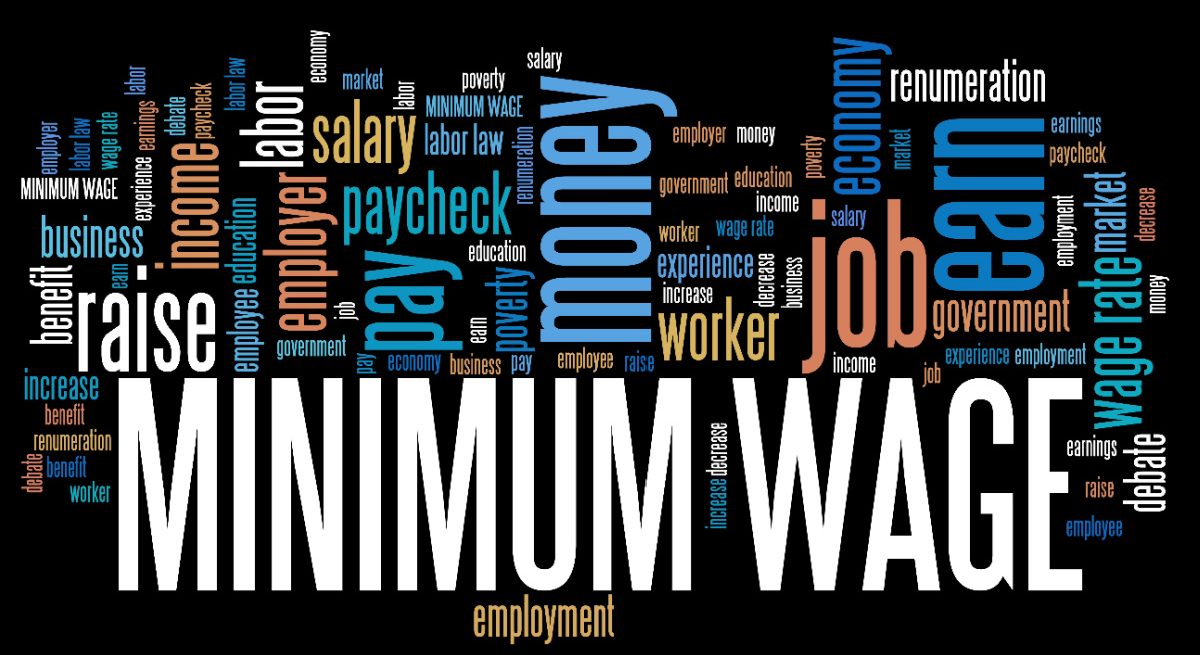Are Restaurants Ready for the Federal Minimum Wage Increase?
5 Min Read By Girish Dhaneshwar, Nishant Sinha
The federal minimum wage may soon be $15 an hour: Here are three ways restaurants can leverage tech to minimize the impact on revenue and employee retention.
The U.S. federal minimum wage is expected to increase to $15 an hour which will put more pressure on businesses—especially in the hospitality & restaurant industries which employ 37 percent of workers who earned the federal minimum wage in 2019. The increase will likely be phased in over four years, but the impact will be immediate for restaurants which are already struggling due to the COVID-19 pandemic.
The problem is not about paying employees more, because the wage increase certainly helps employees to have a better life. Instead, it’s more about restaurant operations and figuring out how operators should manage the cost increase so they continue to earn profits. Many states have set their minimum wage higher than the current federal minimum wage, but 21 states still follow the current federal minimum wage ($7.25 an hour). Restaurants operating in those 21 states (including Georgia, Texas, and Virginia) will see a big impact and they must rethink their operations.
Restaurants have traditionally addressed wage increases in two ways: by passing the cost on to the customer with increased menu prices; or by reducing cost and cutting operational hours and workforce. In the past, both options have resulted in dissatisfaction for employees and customers. Moreover, restaurants have struggled to operate profitably.
To counter the impact of the wage increase on their businesses, restaurant operators should focus on the following three areas:
- “Cost take-out” initiatives across the extended value chain
- Balancing out the increased cost impact by focusing on increased margins and revenue
- Revisiting the operating model
Thankfully technology opens up several possibilities that can help improve revenue, increase productivity, reduce costs and enhance the customer and employee experience.
Cost Take-Out Initiatives Across the Extended Value Chain
The pandemic accelerated the shift from dine-in to pick-up and delivery; and while the dine-in option will resume post mass vaccination, there is certainly a new segment of users that will remain loyal to food delivery.
An increase in orders necessitates an increased focus on fast delivery and accuracy. This scenario will require in-depth planning of resources. Retailers have made great advances in mastering the last mile of delivery operations. For one major retailer, simply changing the mix of carriers and leveraging non-traditional delivery mechanisms resulted in a 40% drop in last-mile delivery costs. Restaurant chains can explore the same concept in their delivery operations.
To maximize profit, restaurants can rely on intelligent decisioning solutions to plan restaurant operations and shifts. Historical data and non-traditional data – like weather, city events, social chatter etc. – can help optimize labor requirements by service type so that employees can be assigned appropriately. Restaurant operators have access to part-time workers to manage peak load; and to maximize revenue and increase the number of orders served, they can move employees between food prep, food service and food delivery. In addition, restaurant owners can leverage analytics to “shape” consumption patterns to balance restaurant labor needs. As an example, an intelligent offer management strategy developed for a store chain helped the company shift the flow of customers to times when the store was well staffed, thereby mitigating the risk of revenue loss during periods of lean labor availability.
The industry has already seen success with a variety of alternate approaches to order taking by servers. They include ordering at tableside or via kiosks, mobile, web, voice, and chat. These approaches cut the time it takes to serve patrons. They also reduce costs, improve customer experiences and create opportunities to rethink the employee mix within a restaurant. As an example, a large U.S. hotel chain created a direct-to-room solution, allowing each guest to bypass the reception counter and self-check-in, select their room and open the room with a mobile key, which helps in improve guest experience and reduces labor costs. Restaurants can enable guests to register for a waiting list, pre-order food and navigate to the table when available—all on their own.
In general restaurants chains should look at intelligent process automation (IPA) opportunities across the value chain. Several of our customers have benefitted from IPA and machine learning (ML) and have used them to improve processes like ordering, demand forecasting, labor planning, inventory management, etc. This helps ease employee workload, enabling them to be more efficient and focus on what matters most in their workday.
Improve Revenue and Margins to Offset Rising Labor Costs
Restaurants can learn from retailers to leverage online shopping behavior (clicks, purchase history, abandonment) to upsell and cross-sell. For example, recommendation engines in online channels can suggest popular items, sides or drinks based on order history and customer preferences. In contact centers—a big opportunity to tap customer segments that are not yet digitally savvy—companies can improve revenue by working on a revenue-sharing model for upsell and cross-sell. One innovative centralized call center for a large U.S. pizza chain is increasing the average check and overall revenue for the company.
Online ordering allows restaurants to capture massive data around customer ordering patterns and preferences. Restaurant operators can make best use of the data to improve revenue as they start to face wage increase impacts. The revenue mix for restaurants is changing and the way they are able to get food right to the doorstep with delivery services and partnerships is making up for losses and opening up opportunities for new revenue streams. Restaurant operators should continue to build on this trend and improve the personalization of their offers and services.
Today, evolutionary AI is allowing restaurants to generate an optimal offer on a 1:1 basis with recommendations that customers may appreciate. In an experiment using this technology, 93% prediction accuracy was achieved using historical data and AI. The AutoML part of the solution refines the model in real time based on performance and the CreativeAI part of the solution builds new creative to maximize response rate and revenue.
Lastly, an increased focus on margin improvement will pay rich dividends. A large CPG player leveraged an analytics platform to build a comprehensive solution for net revenue management that resulted in improved margins.
Revisit the Operating Model
Suppliers are an integral part of the restaurant ecosystem, crucial to menu engineering and menu management. With increasing margin pressure, restaurant operators should consider shifting left in the supply chain so that food prep resources can focus on creating high value custom experiences for both dine-in guests and outdoor catering parties.
Supply chain solutions have evolved and are providing enormous benefits to multiple industries such as retail, manufacturing and consumer goods. Restaurant operators can rely on suppliers to provide high quality ready-to-use food in restaurant recipes which will reduce dependency on in-house production and labor cost. The shelf life of food will improve, food wastage may be reduced, and restaurants can focus on creating new experiences for their diverse customer base across all channels.
Some restaurant chains have already started moving into the grocery aisle. This can be an interesting extension of the business model; but to scale this they’ll need to adopt some of the leading practices from the CPG players.
Restaurant chains should also consider interesting and innovative partnership models. These could be in the area of food delivery or tying in with retailers to leverage their channels for increased sales.



